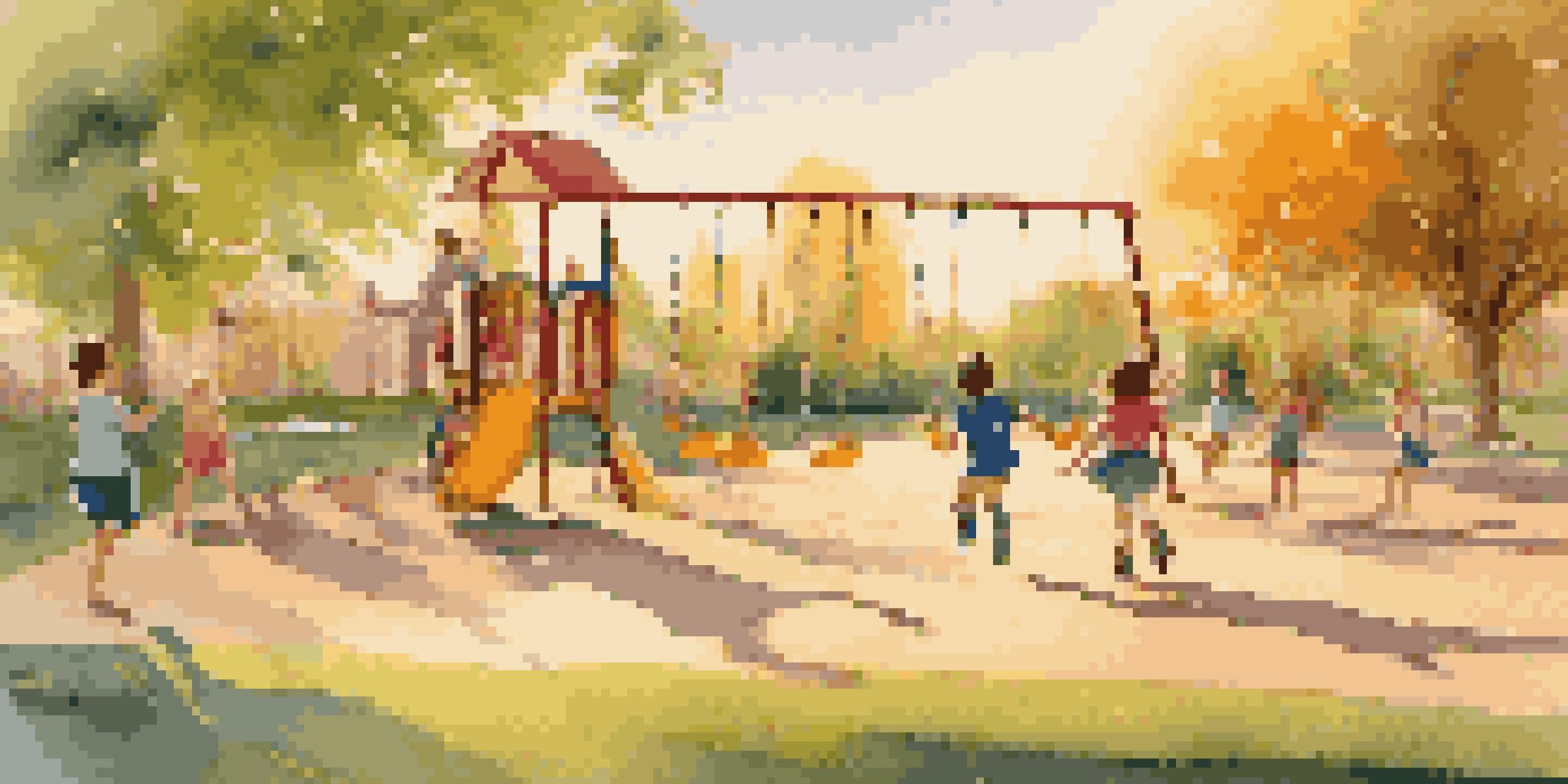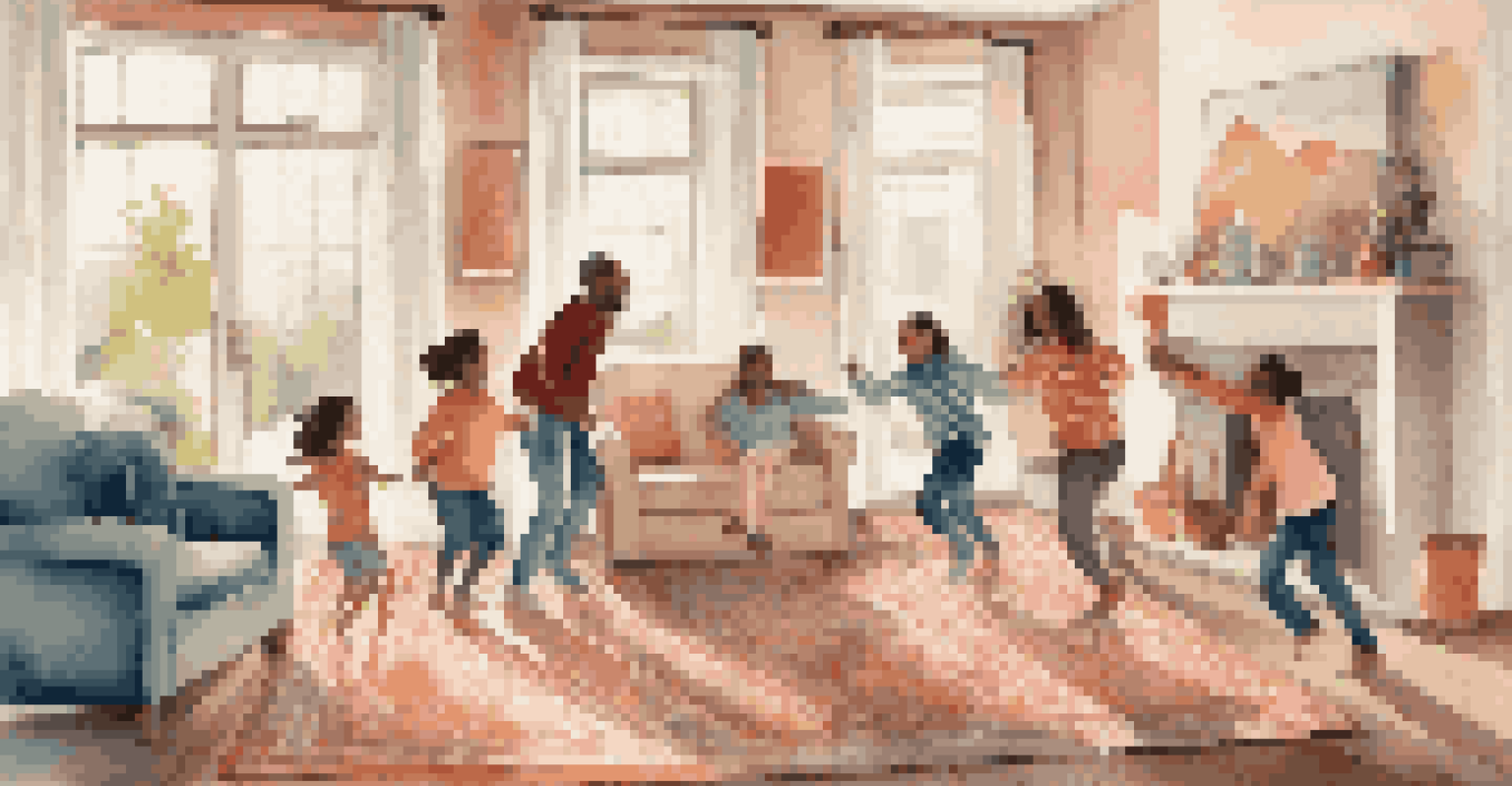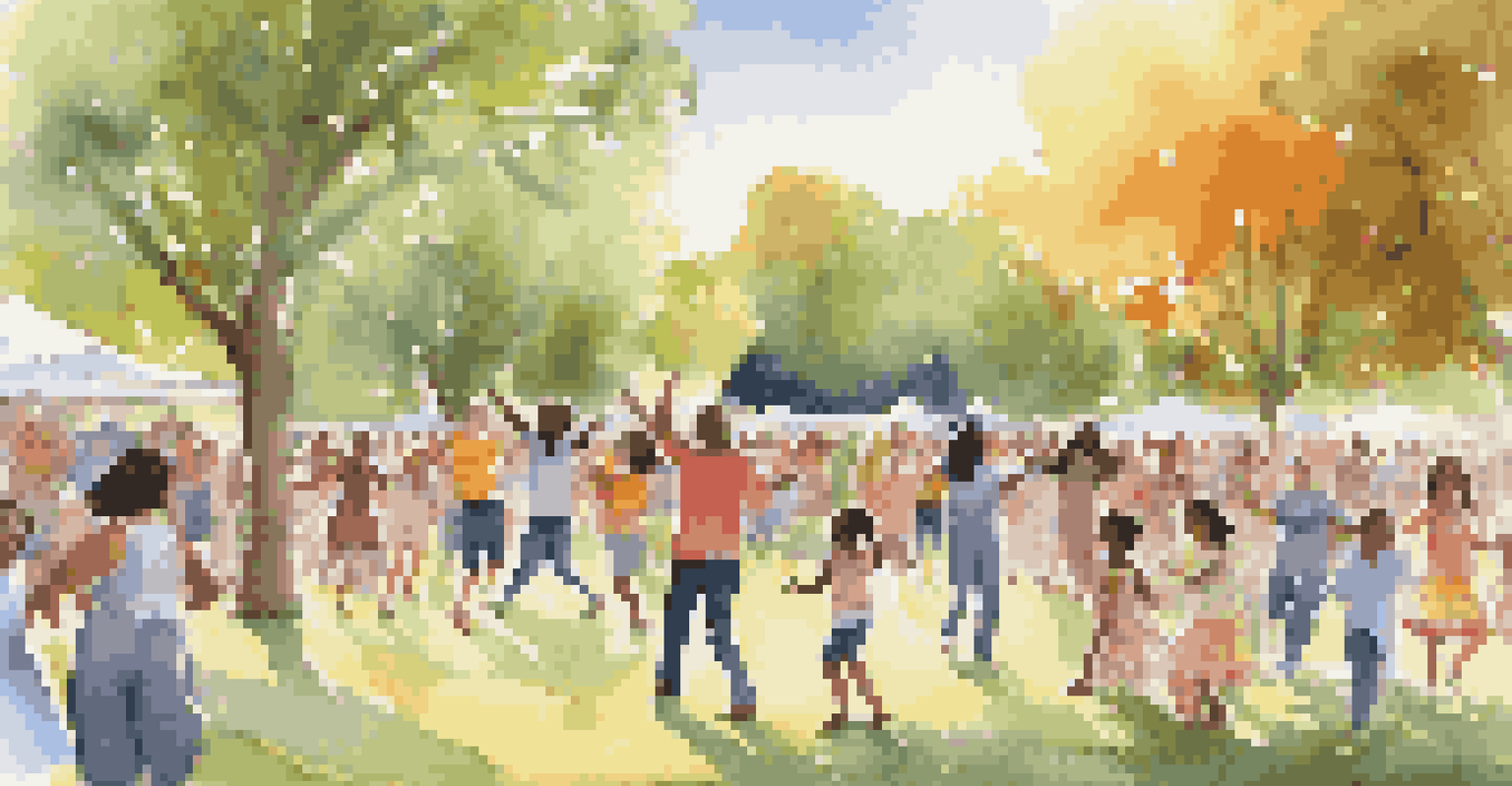Dance and Free Play: Encouraging Exploration in Kids

Understanding the Importance of Free Play in Childhood
Free play is essential for children's development, allowing them to explore their environment in a safe and unstructured way. It encourages creativity, problem-solving, and social skills as kids interact with one another. Unlike structured activities, free play gives children the autonomy to choose their own adventures, fostering independence and confidence.
Play is the highest form of research.
In a world filled with scheduled activities, the simplicity of free play often gets overlooked. However, it’s during these moments of unstructured time that children can truly express themselves. They can pretend to be anyone or anything, which is crucial for developing their imagination and understanding of the world around them.
Moreover, free play can be a powerful tool for emotional regulation. Kids learn to navigate their feelings as they create scenarios, negotiate roles, and resolve conflicts. This not only helps them develop social bonds but also equips them with skills they’ll need throughout their lives.
How Dance Encourages Movement and Expression
Dance serves as a beautiful form of expression for children, allowing them to convey emotions that words sometimes cannot capture. Through movement, kids can release energy, explore rhythms, and express their individuality in a fun, engaging way. Just like how a painter uses colors, a dancer uses movement to create a unique expression.

Incorporating dance into playtime encourages physical activity, which is vital for healthy growth. It helps develop motor skills, coordination, and balance, all while making exercise enjoyable. Plus, dancing can boost mood and confidence, giving kids a sense of accomplishment when they learn new moves or routines.
Free Play Fuels Child Development
Unstructured play nurtures creativity, social skills, and emotional regulation in children.
Dance also fosters a sense of community when children dance together, whether it's in a group class or simply at home. They learn to work as a team, support each other, and celebrate each other's achievements. This collaborative spirit not only strengthens friendships but also enhances their understanding of cooperation.
Building Creativity Through Dance and Play
When combined, dance and free play create a dynamic environment ripe for creativity. Children can invent their own dance moves, choreograph routines, or even create stories that accompany their movements. This fusion of imagination and physicality allows for a rich creative experience that goes beyond traditional forms of play.
Dance is the hidden language of the soul.
Encouraging children to express themselves through dance can lead to higher levels of engagement and enjoyment. For instance, a simple game of freeze dance not only gets them moving but also challenges them to think quickly and creatively. They learn to interpret music and rhythm in their own unique ways, which enhances their artistic skills.
Moreover, when kids see dance as a form of play, they are more likely to embrace it without fear of judgment. This freedom to explore helps them understand that making mistakes is part of the learning process, which is an invaluable life lesson. By fostering this mindset, we empower children to pursue their passions and interests wholeheartedly.
Incorporating Dance into Everyday Life
Integrating dance into daily routines can be a delightful way to encourage movement and creativity. Simple activities like a morning dance party or a family dance-off can turn ordinary moments into joyful experiences. When families engage in dance together, they not only bond but also establish a lifelong appreciation for movement.
Additionally, parents can use dance as a tool to make chores more enjoyable. For example, turning cleaning into a dance party with favorite songs can motivate children to participate while having fun. This approach teaches them that even mundane tasks can be transformed into engaging activities.
Dance Enhances Movement and Joy
Incorporating dance into play promotes physical activity and self-expression while building confidence.
Creating a space for dance at home, whether it’s a designated area for movement or simply some open floor space, can inspire kids to express themselves freely. By fostering an environment that celebrates dance, we help nurture their creativity, confidence, and love for physical activity.
The Role of Music in Dance and Play
Music plays a vital role in both dance and free play, serving as a catalyst for creativity and movement. The right tunes can ignite excitement and inspire children to dance, explore, and express themselves. From upbeat pop songs to classical melodies, music offers a diverse range of rhythms and styles for children to connect with.
Moreover, music can enhance emotional expression during play. Different genres evoke varied feelings, allowing children to explore different moods through their movements. For example, a fast-paced song might lead to energetic dancing, while a slow ballad could inspire gentle, flowing movements.
Incorporating music into playtime can also encourage children to collaborate and create together. They might come up with dance routines or invent games that incorporate musical elements, promoting teamwork and communication. This shared experience can strengthen friendships and foster a love for both music and dance.
Encouraging Social Interaction Through Dance
Dance is a fantastic way for kids to connect with their peers, creating opportunities for social interaction. Group dance activities, like circle dances or partner dances, require communication and cooperation, helping children develop important social skills. These interactions can lead to friendships that thrive on shared experiences and creativity.
Participating in dance classes or community events can expose children to diverse groups, broadening their social circles and cultural understanding. They learn to appreciate different styles of dance while making new friends, fostering empathy and acceptance. This sense of belonging is crucial for their emotional development.
Music Sparks Creativity in Play
Music enriches dance and free play, encouraging emotional expression and collaborative creativity among children.
Additionally, dance can help shy or introverted kids come out of their shells. The expressive nature of dance allows them to communicate without words, providing a comfortable avenue for self-expression. As they gain confidence through movement, they may find it easier to engage with others in various social settings.
Promoting a Lifelong Love for Dance and Movement
By encouraging dance and free play in childhood, we lay the groundwork for a lifelong appreciation of movement. Children who experience the joy of dancing are more likely to continue being active as they grow older. This instills healthy habits that contribute to physical and mental well-being throughout their lives.
Moreover, fostering an environment that celebrates creativity and exploration allows children to view movement as a form of expression rather than a chore. When they associate dance with fun and freedom, they are more likely to pursue it in various forms, whether it’s through dance classes, recreational activities, or simply dancing at home.

Ultimately, dance and free play empower children to embrace their individuality, express their emotions, and connect with others. By nurturing these experiences, we help cultivate a generation that values creativity, movement, and the sheer joy of being active.